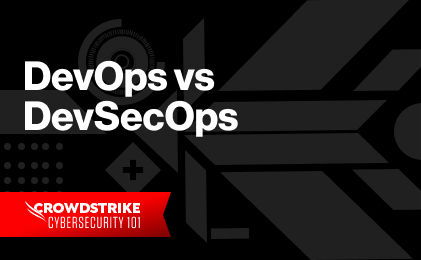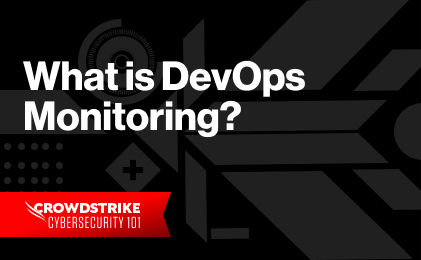What is CI/CD?
Continuous integration and continuous delivery (CI/CD) is a software development methodology that allows for rapid, frequent, and reliable code updates. It is a core component of DevOps, which is a set of practices that aims to foster collaboration and communication between development and operations teams. CI/CD emphasizes automation throughout the software development life cycle (SDLC), replacing manual, legacy methods of deploying code to ensure faster and more secure updates.
Continuous integration is about rapidly integrating code from multiple developers, and continuous delivery is about automatically deploying that code to production. Both depend on automation, and — when combined — continuous integration and continuous delivery can improve the speed, effectiveness, and security of the SDLC.
Why is CI/CD important?
CI/CD is a key component of modern software development. Allowing developers to deploy changes and automatically test them enhances software quality through rapid iteration. Automatic testing also greatly improves security by allowing developers to address vulnerabilities earlier in the development process.
In this article, we will dig deep into each component of CI/CD, explain the pipeline and how it works as a part of DevOps.

2024 State of Application Security Report
Download the CrowdStrike 2024 State of Application Security Report and learn more about the greatest challenges in application security.
Download NowContinuous integration, continuous delivery, and continuous deployment
Let’s go more in-depth into what continuous integration, continuous delivery, and continuous deployment are.
What is continuous integration?
Continuous integration is the practice of frequently merging code changes with an online repository. Code changes from multiple developers are merged into one source and are usually automatically tested as they are committed.
The major benefit of continuous integration is the reduction of risk. Developers always know where they are in the SDLC, what code works (and what code doesn’t), and what bugs will need to be addressed. Continuous integration highlights problems in the code much earlier in the SDLC than deferred integration and significantly reduces the chance of code conflicts.
What is continuous delivery?
Continuous delivery is the practice of automatically deploying code changes to a pre-production environment for rapid deployment to production. It builds on continuous integration by centralizing code for deployment in an online repository and then deploying that code to production based on the needs of your team and clients.
Continuous delivery greatly increases the speed at which code can go live, making it possible for developers to rapidly address market changes and security issues. It focuses on delivering code, learning from the code’s performance in the market, and then addressing any necessary changes with minimal downtime.
What is continuous deployment?
Continuous deployment is different from continuous delivery. Continuous deployment is the final step in the CI/CD pipeline, automating the process of releasing code updates to production.
Continuous deployment may seem like the natural evolution of CI/CD, but it should be approached with care. Continuous deployment removes the human gate at the end of software development, automatically pushing changes to production. It requires a significant investment in automation testing to ensure that code is compliant and secure before deployment.
The advantage of continuous deployment is that it greatly increases the speed of software deployment. This allows you to receive user feedback much closer to the initial development of the code and may let you move faster than your competition.

CrowdCasts
Explore our CrowdCasts resources page to hear from multiple industry leaders.
Explore CrowdCastsWhat is the CI/CD pipeline?
The CI/CD pipeline is the automated workflow that encompasses steps for continuous integration, continuous delivery, and deployment. Every CI/CD pipeline will differ based on a team’s specific needs, but a typical task flow includes the following:
1. Continuous integration phase
- Code commit: Developers push code changes to a version control system (e.g., Git).
- Build: The continuous integration server automatically pulls the latest code, compiles/builds the application, and performs static code analysis.
- Automated tests: Unit tests, integration tests, and other automated tests verify the code changes.
- Code quality checks: Tools such as linters and code analyzers check for code style, potential bugs, and adherence to coding standards.
- Artifact generation: Build artifacts (e.g., compiled binaries, Docker images) are created if all tests pass successfully.
2. Continuous delivery phase
- Deployment to staging: If the code passes all tests, the artifacts are deployed to a staging environment that closely resembles the production environment.
- Further testing: Performance testing, security testing, user acceptance testing (UAT), and other testing may be performed in the staging environment.
- Manual approval: In some cases, a manual approval step may be required before proceeding to deployment in production.
3. Continuous Deployment Phase (Optional)
- Deployment to production: If the code passes all tests and approvals, it is automatically deployed to the production environment.
- Monitoring and feedback: The deployed application is monitored in production to ensure stability and performance. Any issues detected are fed back into the CI/CD pipeline for rapid resolution.
What is CI/CD in DevOps?
Although CI/CD and DevOps are separate practices, they are frequently utilized together. CI/CD focuses on the automation of the software build and deployment process. DevOps is a working process and mindset that promotes collaboration to achieve faster and more reliable software delivery.
It may help to think of DevOps as a bucket containing a variety of toolsets and practices, and CI/CD is one complementary practice that fits into the DevOps whole. DevOps encourages process automation and collaboration, both of which are bolstered through CI/CD.
| CI/CD Tool | Description |
|---|---|
| Jenkins | Jenkins is one of the oldest and most widely used open-source CI/CD tools. Its core strength is its vast ecosystem of plugins for integrating with various technologies and platforms. |
| Gitlab CI/CD | GitLab CI/CD is tightly integrated into the GitLab platform, providing CI/CD capabilities within the GitLab environment. It enables the automation of testing and deployment workflows. |
| Travis CI | Travis CI is known for its ease of use and strong integration with GitHub. It automates testing and deployment workflows for GitHub projects, streamlining the development process. |
| CircleCI | CircleCI offers cloud-based CI/CD services with easy configuration via YAML files. It supports parallelism and Docker-based workflows, making it suitable for modern development practices. |
| GitHub Actions | GitHub Actions allows workflows to be automated directly within GitHub repositories using YAML configuration files. It offers seamless integration with GitHub's version control features. |
| Drone | Drone is a lightweight and flexible CI/CD platform that supports container-based workflows. It can be self-hosted or used as a cloud service, providing simplicity and scalability. |
| Concourse | Concourse focuses on automation and pipeline configuration, treating pipelines as first-class citizens. It offers a web-based UI for managing workflows and automating the development process. |
| Tekton | Tekton is a Kubernetes-native CI/CD framework that enables building, testing, and deploying applications using Kubernetes resources. It provides flexibility and scalability for cloud-native development. |
Get started with CrowdStrike
Though CI/CD can greatly enhance the efficiency and speed of your pipeline, it’s important to ensure that your automation solves problems rather than introducing them. Having a trusted security partner in your corner can make all the difference. CrowdStrike Falcon® Cloud Security protects your pipeline with cloud-native architecture, a single console, and automated compliance tools.
Learn More
Read this blog and learn how CrowdStrike ensures organizations protect their cloud workloads throughout the entire software development lifecycle to effectively combat adversaries targeting the cloud.
CrowdStrike Enhances Cloud Detection and Response (CDR) Capabilities to Protect CI/CD Pipeline





